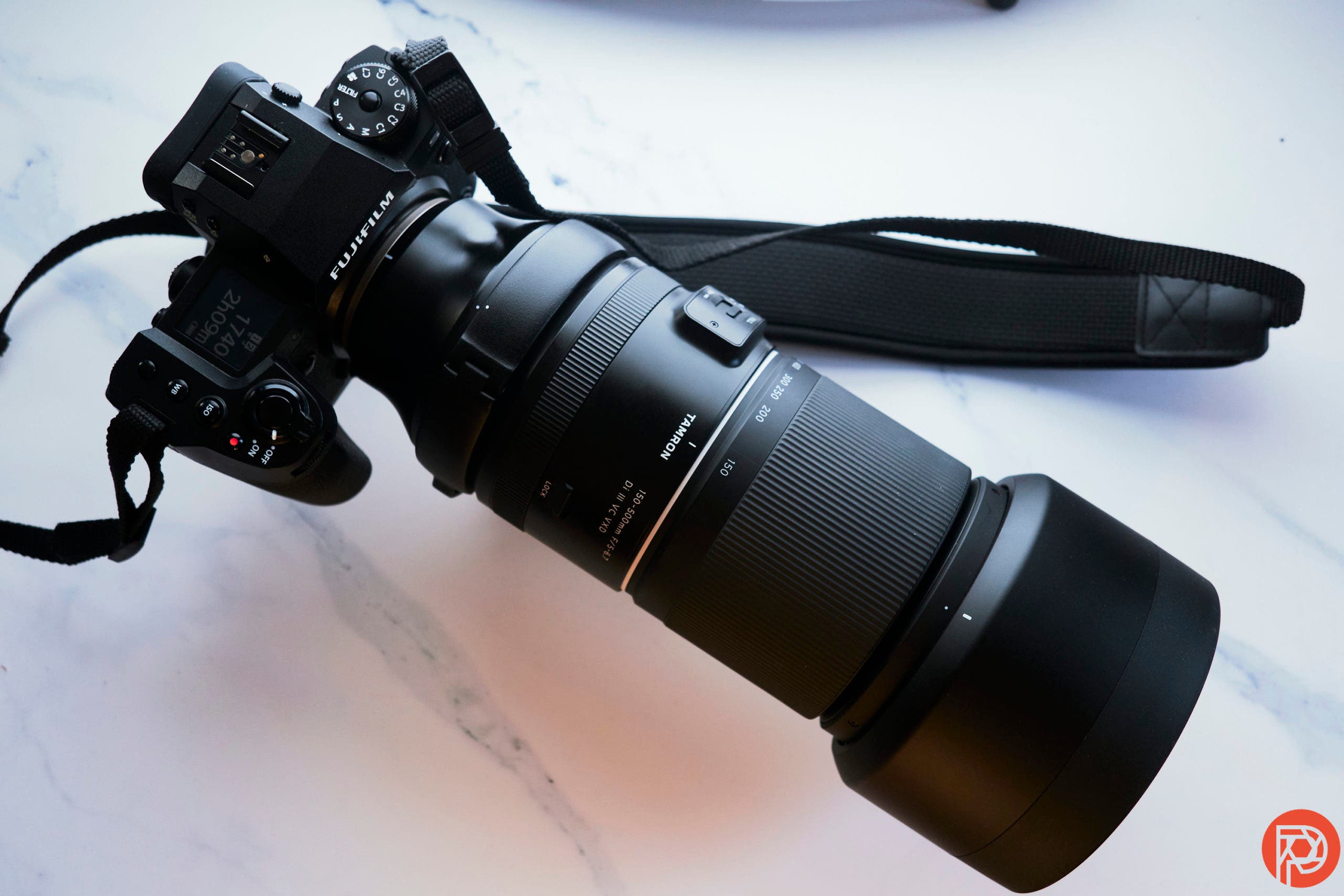Our Tamron 150-500mm f5-6.7 Di III VC VXD review got a recent update testing it with Fujifilm cameras. Recently, the company announced that this would be the third zoom lens that they issue for Fujifilm cameras. And thankfully, we got to test it pretty early. Besides being surprisingly small for what it is, it’s also quite capable at photographing birds and animals, as well as a variety of other subjects.
After getting off the phone with Reviews Editor Hillary Grigonis, we agreed that Canon and Sony are still better than Fujifilm when it comes to autofocus. She reviewed the 150-600mm lens from Fujifilm and got around a 30-40% miss-rate with that lens. In good lighting, the Tamron didn’t miss that often. Where it gets more complex is with photographing birds in trees shrouded by leaves. What I found to be the sweet spot with the XH2 is around 10 frames a second and no electronic shutter.
Overall, I think Tamron is doing a great job here. But, it works best in AF-S and with little obstructions, as does any other system. The moment things start to get in the way, even changing the AF-C types on the XH2 and XH2s didn’t save the results if shooting too fast. When combined with the Pre-Shot ES mode, I got several keeper shots. But for the amount of photos I shot, I’d expect to have more. Then again, Canon’s cameras have spoiled me.
Here’s the wording from our review update. Want one? They’re at a surprisingly good price on Amazon.
On Fujifilm
In late 2022, Tamron announced that the Tamron 150-500mm f5-6.7 Di III VC VXD will be available for Fujifilm X mount. In many ways, this is perfect. It’s a full-frame lens now being used on an APS-C sensor. Overall, the autofocus works pretty well. It does have a few hiccups on the Fujifilm X Pro 3, Fujifilm X Pro 1, Fujifilm XH2, and the Fujifilm XH2s. These hiccups have to do with focusing from one end of the range to the other. Sometimes it will work, and sometimes it won’t. There’s an odd workaround where you have to focus on something close, then slightly farther away, and then even farther away. Otherwise, you just need to keep your fingers on the focus limiter switch.

Overall, the autofocus performance with these cameras is quite fast. Of course, the XH2s has the fastest autofocus performance of the bunch. However, even the X Pro 3 is no slouch. Granted, it’s not getting the AI scene detection the XH2 and XH2s have, but it still works reliably.
With all this said, Fujifilm still has a way to go when it comes to autofocusing with the Tamron lens at faster frame rates. I tested this by using the Pre-Shot ES mode at the fastest frame rates they deliver without cropping the image. And in AF-C with scene detection turned on for birds, the autofocus didn’t always capture the birds’ eyes. Still, it worked, and even though I shot a ton of photos, I came back with several good keepers.
When I turned off Pre-Shot ES and shot at 10 frames a second with tracking, I was able to nail several great photos I’m proud of. To clarify, I also used exposure preview with the exposure compensation increased by two stops. This ensured that the camera saw the birds clearly.
Pre-Shot ES makes sure you don’t miss a moment, and it’s similar to OM System’s Pro Capture mode. In better lighting, it’s nearly flawless. In lower lighting, it will miss at times. When photographing birds in the trees, it can all depend on how many leaves are in front of the bird.
We’re updating this review’s Image Quality section to contain a specific section just for Fujifilm.













Leave a Reply